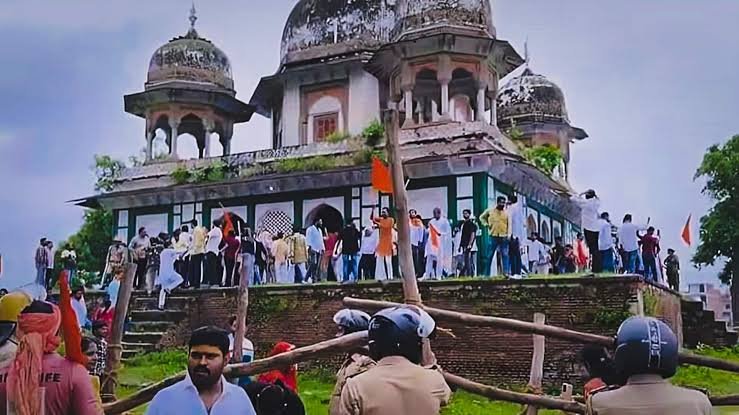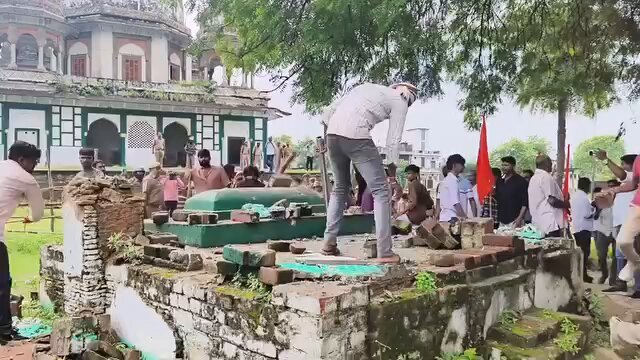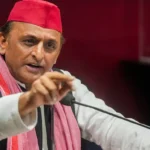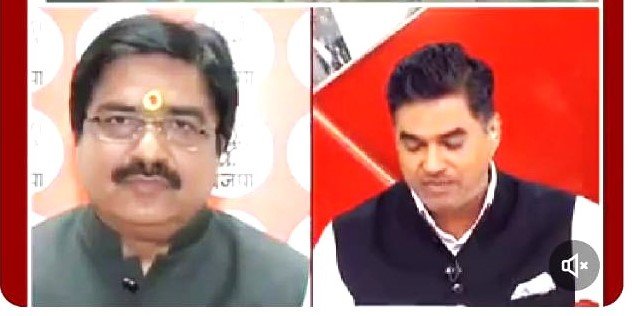
BY MOHAMMAD TARIQUE SALEEM
Fatehpur, Uttar Pradesh, witnessed a disturbing attack on a 200-year-old historic mausoleum, a site protected by the Archaeological Survey of India. The mob claimed the structure was built atop an ancient Hindu temple, stormed the premises, scuffled with police, defied barricades, and planted saffron flags on the sacred tomb. Despite an FIR naming 10 people and 150 unidentified others, by August 12 no arrests had been made, even as security personnel guarded the site.

When the names of BJP’s accused in the attack surfaced, BJP spokesperson Prem Shukla appeared caught off guard. In a scene both metaphorical and telling, his “brain circuit breaker tripped, transformer blew, Wi-Fi failed, and words went out of network coverage.” Beyond a brief remark, “All the hooliganism will get arrested soon,” he maintained a conspicuous silence.
Meanwhile, Samajwadi Party chief and Member of Parliament Akhilesh Yadav took to X with a stinging rebuke. Calling the incident “too shameful,” he demanded swift arrests, citing video evidence, and warned that administrative officers could be held accountable if they failed to act. His post echoed the sentiment of many who see the attack as part of a deeper political game.

The issue spilled into the Uttar Pradesh Assembly, where opposition leaders accused the BJP of orchestrating the attack to inflame communal tensions and divert public attention. SP’s Leader of Opposition Mata Prasad Pandey criticized inadequate police deployment and alleged political motives behind the vandalism.
The Yogi Adityanath government, however, rejected these accusations. Finance and Parliamentary Affairs Minister Suresh Khanna stated that a strong FIR had been lodged on August 11 under multiple IPC sections and special laws. He promised stern action against any form of vigilantism, affirming that law and order would be upheld without discrimination.
Yet the visuals remain stark, an ancient tomb desecrated, a spokesperson fumbling into silence, opposition leaders raising alarms, and an administration assuring action without immediate results. For many, the delay in arrests despite clear video evidence is an unsettling reflection of selective urgency.
Beyond the politics, the attack strikes at something more profound, the shared heritage of Fatehpur. Such monuments are more than bricks and mortar; they are witnesses to centuries of coexistence. As accusations fly and political defenses harden, one truth stands clear: silence in the face of hate is not neutrality, it is complicity. And in Fatehpur, that silence has already spoken volumes.







